
Dattatreya, Dattā or Dattaguru, is a paradigmatic Sannyasi (monk) and one of the lords of yoga, venerated as a Hindu god. He is considered to be an avatar and combined form of the three Hindu gods Brahma, Vishnu, and Shiva, who are also collectively known as the Trimurti, and as the manifestation of Parabrahma, the supreme being, in texts such as the Bhagavata Purana, the Markandeya Purana, and the Brahmanda Purana, though stories about his birth and origin vary from text to text. Several Upanishads are dedicated to him, as are texts of the Vedanta-Yoga tradition in Hinduism. One of the most important texts of Hinduism, namely Avadhuta Gita is attributed to Dattatreya. Over time, Dattatreya has inspired many monastic movements in Shaivism, Vaishnavism, and Shaktism, particularly in the Deccan region of India, Maharashtra, Gujarat, Madhya Pradesh, Rajasthan and Himalayan regions where Shaivism is prevalent. His pursuit of simple life, kindness to all, sharing of his knowledge and the meaning of life during his travels is reverentially mentioned in the poems by Tukaram, a saint-poet of the Bhakti movement.
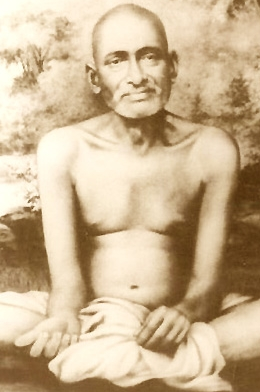
Gajanan Maharaj was an Indian Hindu guru, saint and mystic. His origins remain uncertain. He first appeared at Shegaon, a village in Buldhana district, Maharashtra, as a young man aged 30, probably on 23 February 1878. He attained Sanjeevana Samadhi on 8 September 1910, which is thought to be a process of voluntary withdrawal from one's physical body. This date of his Samadhi is commemorated every year as part of the Shree Punyatithi Utsav. The date of his first appearance is considered an auspicious day and is celebrated as Prakat Din Sohla.

Sripada Srivallabha is an Indian guru of the Dattatreya Sampradaya (Lineage) who is regarded as an incarnation of Lord Dattatreya. He is considered as one of the first complete Avatars (incarnations) of the deity Dattatreya in Kali Yuga. Of note, Narasimha Saraswati, Manik Prabhu, Swami Samarth, are believed to be other incarnations of Lord Dattatreya that followed Sripada Srivallabha.
The Shri Guru Charitra is a book based on the life of Shri Nrusimha Saraswati, written by the 15th-16th century poet Shri Saraswati Gangadhar.
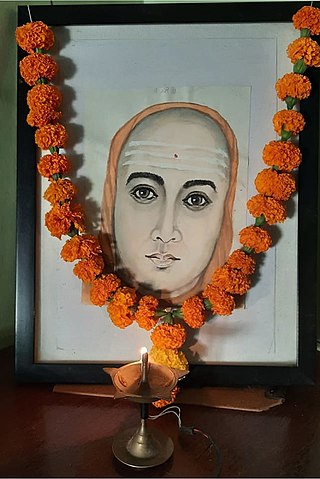
Shree Narasimha Saraswati Swami or Shree Nrusimha Saraswati Swami was an Indian guru of Dattatreya tradition(sampradaya). According to the Shri GuruCharitra, he is the second avatar of Dattatreya in Kali Yuga after Sripada Sri Vallabha.

Shri Swami Samarth Maharaj also known as Swami of Akkalkot was an Indian Hindu god of the Dattatreya Tradition. He lived during the nineteenth century from 1858 to 1878 and is a known spiritual figure in various Indian states including Karnataka and Maharashtra. Swami Samarth traveled all across the Indian subcontinent and eventually set his abode at Akkalkot, a village in present-day Maharashtra. He is thought to have arrived at Akkalkot on a Wednesday, during either September or October in 1856. He resided at Akkalkot for close to 22 years.

Vasudevanand Saraswati, also known as Tembe Swami, is a Hindu saint who is regarded as an incarnation of Dattatreya.
Swami Shankarāshram II was the fourth head guru or Mathādhipati of the Chitrapur Saraswat Brahmin community. He reigned from 1770 to 1785.
Premanand Swami (1784–1855) was a saint of the Swaminarayan Sampradaya and one of Swaminarayan's paramhansas.
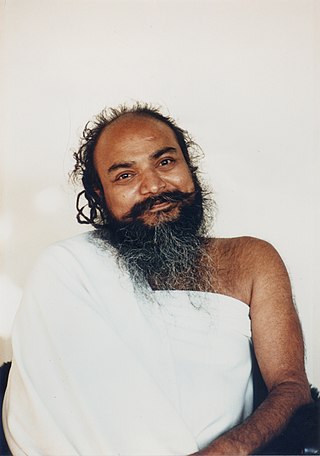
Shri Shivabalayogi Maharaj was a yogi who claimed to have attained self-realization through twelve years of arduous tapas, meditating in samādhi for an average of twenty hours a day.

Shri Samartha Sadaguru Ganapatrao Maharaj Kannur (1909–2004) was an Indian guru in the Inchegeri Sampradaya.

Shivarudra Balayogi Maharaj, born Srinivas (Seenu) Dikshitar in Kolar in the South Indian state of Karnataka, is a self realised Yogi and a direct disciple of Shivabalayogi.

Sri Shreedhara Swami Maharaj was an Indian prominent Kannada-Marathi saint and religious poet in the Hindu tradition. Shreedhar Swami was a devotee of Lord Ram and a disciple of Samarth Ramdas. Recognised as the incarnation of Adi Guru Sri Dattatreya
Nrusinhawadi commonly known as Narsobawadi or Narsobachi Wadi is a small town in Shirol Tahasil in Kolhapur district, Maharashtra. Narsobawadi gets its name from the presence of 'Shri Nrusinha Saraswati', the Purna Avatar of Lord Dattatreya.

Datta Jayanti, also known as Dattatreya Jayanti, is a Hindu festival, commemorating the birth of the Hindu deity Dattatreya (Datta), a combined form of the Hindu male divine trinity of Brahma, Vishnu, and Shiva.
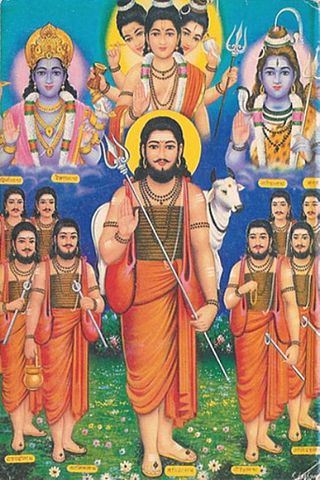
The Inchagiri Sampradaya, also known as Nimbargi Sampradaya, is a lineage of Hindu Navnath and Lingayat teachers from Maharashtra and Karnataka, which was started by Bhausaheb Maharaj. It is inspired by Sant Mat teachers as Namdev, Raidas and Kabir. The Inchagiri Sampradaya has become well known throughout the western world due to the popularity of Nisargadatta Maharaj.
Shri Revan Natha, also known as Revan Siddh, Kada Siddha, and, Kaadhsiddheshwar Siddharaj was the 7th or 8th Navnath. He is especially worshipped in western India, where several temples are dedicated to him, and several sampradayas trace their origin to him, the best-known being the Inchegeri Sampradaya.
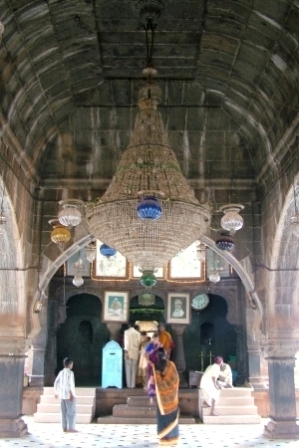
Sri Manik Prabhu Devasthanam is a Hindu temple located in the Manik Nagar near, Humnabad in the state of Karnataka, India

Shri Nana Maharaj Taranekar, is considered to be a prominent saint within the Datta Sampradaya sect of Hinduism during the twentieth century. He is regarded as the sixteenth incarnation of lord Dattatreya. Shri Nana was the direct disciple of Shri Vasudevanand Saraswati Swami Maharaj.

Pant Maharaj, born Dattatreya Ramchandra Kulkarni, was a Hindu yogi and guru in the Belgavi region of India and is regarded by his devotees as a saint and an incarnation of Dattatreya.


















